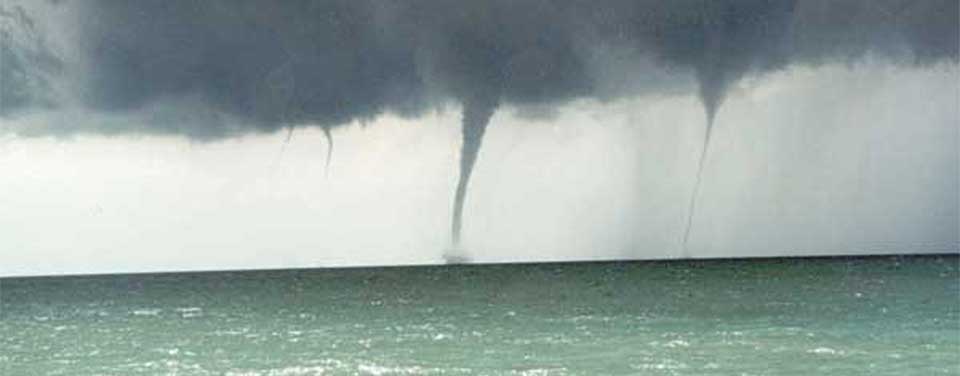What is a waterspout?
A waterspout is a whirling column of air and water mist.

According to NOAA's National Weather Service, the best way to avoid a waterspout is to move at a 90-degree angle to its apparent movement. Never move closer to investigate a waterspout. Some can be just as dangerous as tornadoes.
Waterspouts fall into two categories: fair weather waterspouts and tornadic waterspouts.
Tornadic waterspouts are tornadoes that form over water, or move from land to water. They have the same characteristics as a land tornado. They are associated with severe thunderstorms, and are often accompanied by high winds and seas, large hail, and frequent dangerous lightning.
Fair weather waterspouts usually form along the dark flat base of a line of developing cumulus clouds. This type of waterspout is generally not associated with thunderstorms. While tornadic waterspouts develop downward in a thunderstorm, a fair weather waterspout develops on the surface of the water and works its way upward. By the time the funnel is visible, a fair weather waterspout is near maturity. Fair weather waterspouts form in light wind conditions so they normally move very little.
If a waterspout moves onshore, the National Weather Service issues a tornado warning, as some of them can cause significant damage and injuries to people. Typically, fair weather waterspouts dissipate rapidly when they make landfall, and rarely penetrate far inland.
Search Our Facts
Get Social
More Information
Last updated: 01/20/23
Author: NOAA
How to cite this article